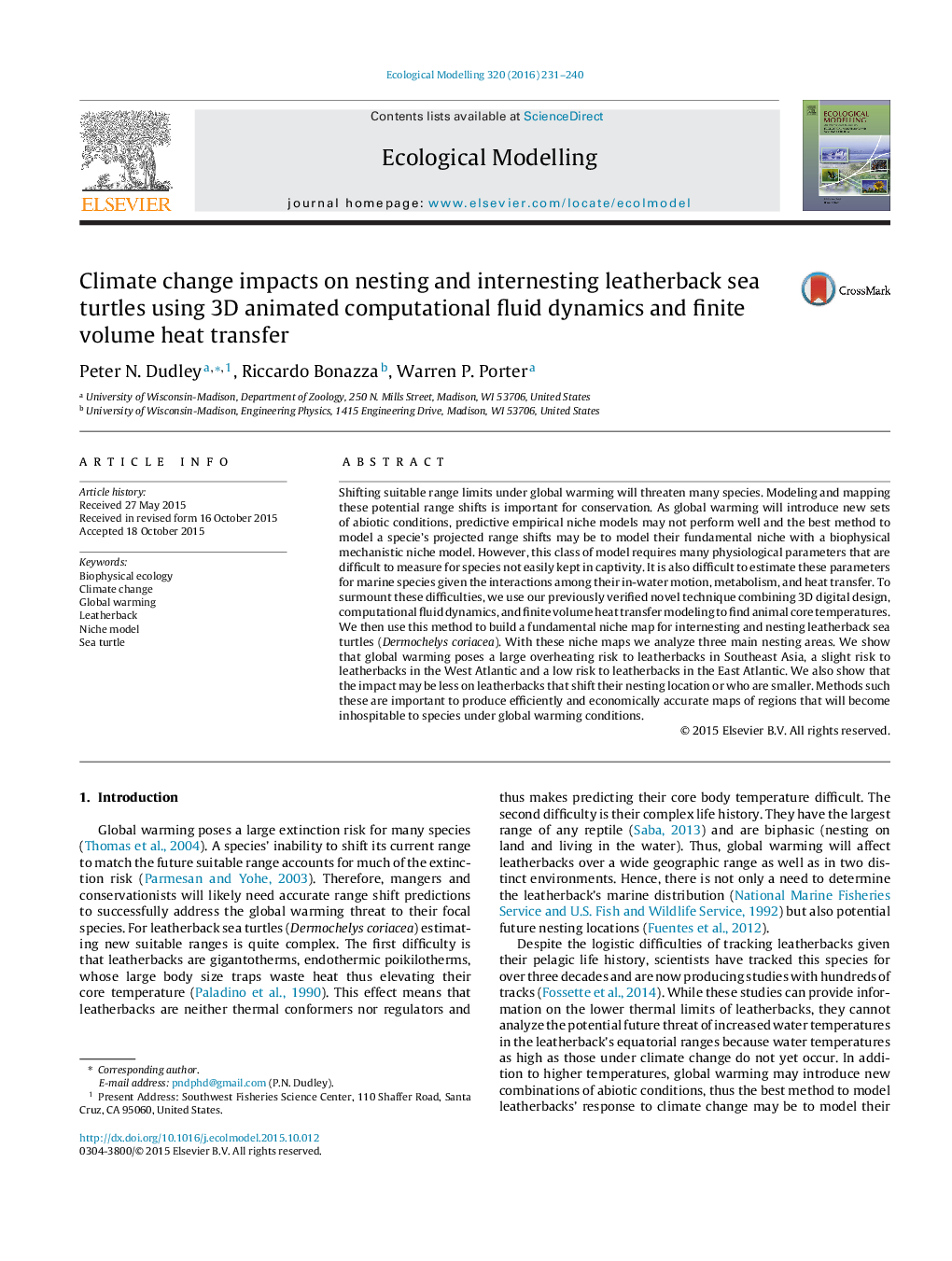| Article ID | Journal | Published Year | Pages | File Type |
|---|---|---|---|---|
| 6296273 | Ecological Modelling | 2016 | 10 Pages |
Abstract
Shifting suitable range limits under global warming will threaten many species. Modeling and mapping these potential range shifts is important for conservation. As global warming will introduce new sets of abiotic conditions, predictive empirical niche models may not perform well and the best method to model a specie's projected range shifts may be to model their fundamental niche with a biophysical mechanistic niche model. However, this class of model requires many physiological parameters that are difficult to measure for species not easily kept in captivity. It is also difficult to estimate these parameters for marine species given the interactions among their in-water motion, metabolism, and heat transfer. To surmount these difficulties, we use our previously verified novel technique combining 3D digital design, computational fluid dynamics, and finite volume heat transfer modeling to find animal core temperatures. We then use this method to build a fundamental niche map for internesting and nesting leatherback sea turtles (Dermochelys coriacea). With these niche maps we analyze three main nesting areas. We show that global warming poses a large overheating risk to leatherbacks in Southeast Asia, a slight risk to leatherbacks in the West Atlantic and a low risk to leatherbacks in the East Atlantic. We also show that the impact may be less on leatherbacks that shift their nesting location or who are smaller. Methods such these are important to produce efficiently and economically accurate maps of regions that will become inhospitable to species under global warming conditions.
Related Topics
Life Sciences
Agricultural and Biological Sciences
Ecology, Evolution, Behavior and Systematics
Authors
Peter N. Dudley, Riccardo Bonazza, Warren P. Porter,
